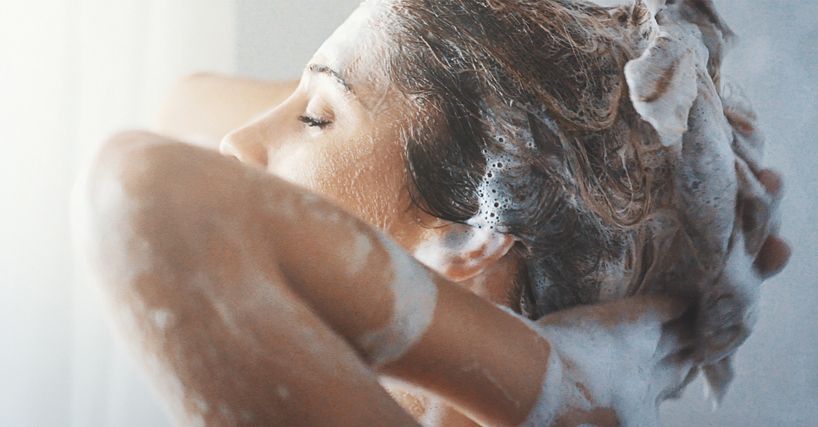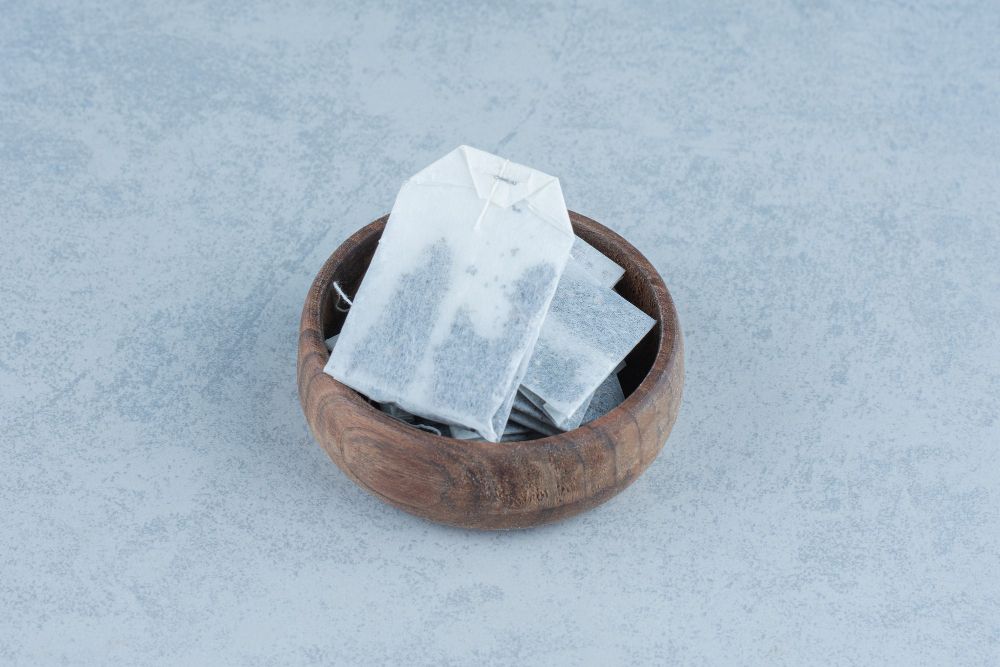Book Now to Experience
Acne Treatment
1 Minute Self-Registration
Date should not be before minimal date
Author: Natalie Ng|9 April 2025
A derma roller is a small handheld tool with a rolling head covered in tiny needles. It’s designed to create microchannels in the skin, which can help with collagen production, improve skin texture, and even support hair growth on the scalp. Many people use it to reduce wrinkles, fade pigmentation, and improve overall skin conditions. While derma rollers can be effective, using them the right way is key to avoiding irritation or damage. Before rolling, it’s important to clean both your skin and the device properly. Read on to discover how to use a derma roller safely for the best results!
Understanding Vitex for Acne Treatment

If you're exploring Vitex for acne, it’s essential to understand what makes this plant effective for treating breakouts related to hormone imbalances. Vitex agnus castus, commonly known as chaste tree, has been used for centuries to treat various hormonal conditions. Understanding its properties helps users make the most of this natural supplement.
What is Vitex?
Vitex is a slow-growing shrub that can reach up to 15 feet tall. It produces small purple berries and grape-colored flowers. The therapeutic benefits come from its rich mix of plant compounds, including flavonoids, iridoids, phenolic acids, and essential oils. These compounds are crucial for its ability to balance hormones, which directly affects acne caused by hormonal changes.
How Vitex Works to Help Acne
Vitex is especially beneficial for hormonal acne, which is often triggered by imbalances in estrogen and progesterone levels. The key to its effectiveness lies in its ability to regulate these hormones.
- Balancing Estrogen and Progesterone: Vitex influences the pituitary gland, which plays a major role in hormone production. By promoting the production of progesterone and stabilizing estrogen levels, Vitex can reduce acne breakouts caused by hormonal fluctuations.
- Reducing Inflammation: Hormonal acne is often linked to inflammation in the body. Vitex’s anti-inflammatory properties can help calm this inflammation, reducing the intensity of acne flare-ups.
Recommended Dosage and Usage
- Standard Dosage: To see noticeable results in reducing acne breakouts, the recommended dosage of Vitex is typically 700-800 mg daily. It's crucial to follow this dosage consistently for 3 to 6 months. During this time, the body will adjust, and improvements in skin health should begin to appear.
- Formulation Options: Vitex is available in various forms, including capsules and tablets. For those who prefer plant-based options, vegan capsules are widely available and are a great choice.
Hormonal Acne Root Causes
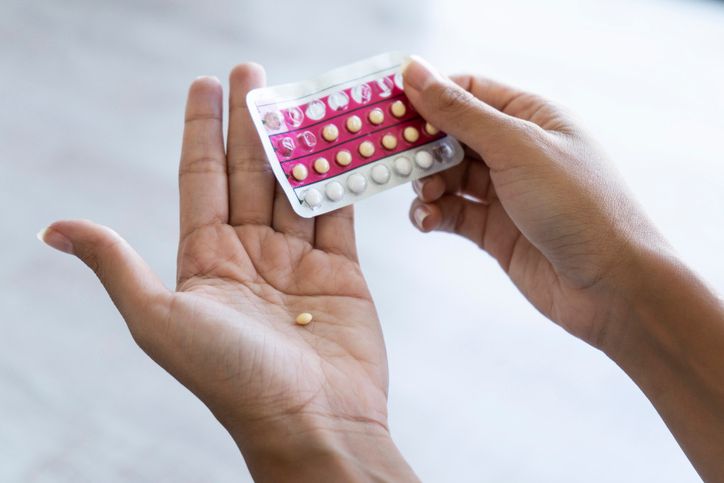
Hormonal acne is often linked to imbalances in specific hormones, especially androgens like testosterone. These hormones can surge due to various factors, such as coming off birth control or experiencing stress. Understanding the root causes of hormonal acne helps in effectively treating it, rather than simply addressing the visible breakouts.
Elevated Androgens Trigger Breakouts
Androgens like testosterone can increase sebum production, leading to clogged pores and acne.
- How androgens affect acne: Increased androgen levels, particularly testosterone and its stronger form, DHT, stimulate sebaceous glands to produce more oil. This excess oil can clog pores and create an ideal environment for acne-causing bacteria to thrive.
- When androgens spike: Hormonal acne can worsen during specific life stages, like puberty, menstruation, or menopause. Women, in particular, may experience flare-ups leading up to their menstrual cycle, as fluctuating estrogen and progesterone levels affect how the body responds to androgens.
- Conditions like PCOS: Polycystic ovary syndrome (PCOS) is another condition that can increase androgen levels, leading to more frequent acne breakouts.
While Vitex doesn't directly block androgens, it helps regulate hormone production by supporting progesterone levels, which can indirectly reduce the activity of androgens. When androgen levels are better regulated, sebum production is often reduced, leading to fewer acne breakouts.
Impact of Birth Control on Hormonal Acne
Hormonal birth control is commonly used to manage acne, but its effects can vary based on the type of contraception.
- Combination birth control pills: These pills contain both estrogen and progesterone. They are often effective in treating acne by regulating hormone levels and reducing the impact of androgens on the skin.
- Progestin-only birth control: This method can have the opposite effect and may worsen acne in some users. Progestin, an ingredient in these pills, can increase sebum production due to its androgen-like effects.
- Adjustment period: If you're switching or starting birth control for acne treatment, it's important to know that it may take two to three months to see visible improvements. During this period, your skin might worsen before getting better as your body adjusts to new hormone levels.
For women experiencing persistent acne on progestin-only birth control, switching to a combination pill may help. Consulting a healthcare provider about this change is essential.
The Cortisol-Stress Connection
Stress can significantly affect your skin, and the connection between stress and acne is largely tied to cortisol, the body’s primary stress hormone.
- How stress impacts acne: When you’re stressed, your body releases cortisol, which can increase oil production in your skin, leading to more acne. This is particularly true for women, who produce androgens in their adrenal glands when stressed.
- Inflammation and breakouts: Cortisol doesn’t just impact oil production. It also releases inflammatory chemicals called neuropeptides, which can worsen acne and transform small blemishes into more severe outbreaks.
- Skin healing: High cortisol levels can interfere with collagen production and slow down the regeneration of skin cells. This results in slower healing of acne and prolonged inflammation.
Stress-induced breakouts often appear along the jawline and neck, areas more sensitive to cortisol fluctuations. Managing stress is crucial not just for overall health but also for clearer skin.
Read More
Benefits of Vitex For Skin Health
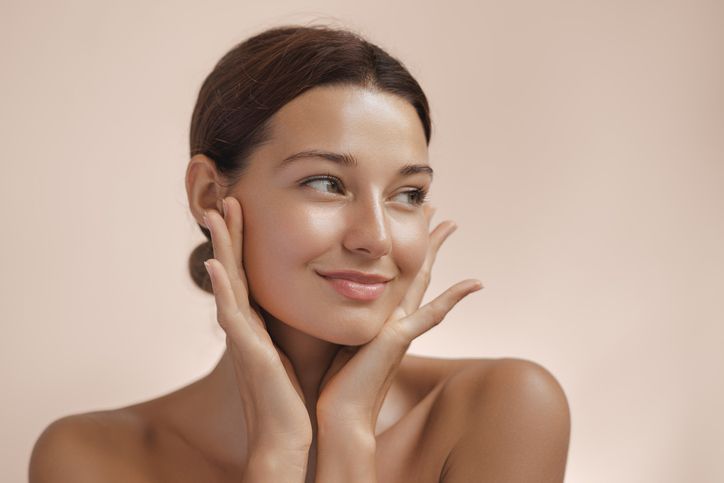
1. Reduces Inflammation and Redness
Vitex contains natural anti-inflammatory compounds that help reduce the redness and swelling associated with acne breakouts. By calming the skin, it prevents irritation and helps improve the overall appearance of the skin, especially during active acne flare-ups.
2. Protects Against Oxidative Stress
The antioxidant properties of Vitex help protect the skin from oxidative stress. Oxidative stress can accelerate skin aging and damage the skin cells. By neutralizing free radicals, Vitex helps prevent premature aging and supports overall skin health.
3. Supports Collagen Production
Vitex aids in collagen production, which is crucial for maintaining skin elasticity. Collagen helps keep the skin firm and smooth, reducing the appearance of fine lines and promoting a youthful complexion. With its ability to support collagen synthesis, Vitex helps maintain the skin's resilience and strength.
4. Regulates Hormones and Reduces Acne Flare-Ups
Vitex balances hormone levels, especially progesterone, and helps reduce androgen dominance. This regulation can prevent hormonal acne, which is often triggered by imbalances, particularly around the chin and jawline. By addressing the root cause of hormonal acne, Vitex can lead to fewer breakouts and more consistent skin clarity over time.
5. Long-Term Skin Health Benefits
By regulating menstrual cycles and lowering prolactin levels, Vitex provides long-term support for skin health. With consistent use, it improves skin clarity and reduces the frequency and severity of hormonal acne breakouts, offering a natural alternative to synthetic acne treatments.
How To Use Vitex Correctly?
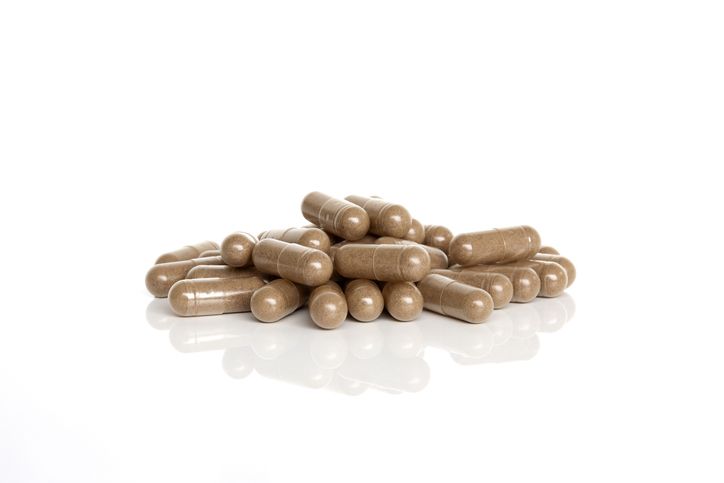
The effectiveness of Vitex as an acne treatment depends not only on the dosage but also on the timing of its intake. Consistency and correct usage are essential for seeing results.
Recommended Dosage
- Standard dosage: The typical dosage for Vitex is 160 mg per day. For more severe acne cases, higher doses up to 400 mg may be necessary.
- Starting dose: If you're new to Vitex, it's recommended to start with a lower dose and gradually increase it to monitor your body’s response.
- Optimal results: To achieve the best results, studies suggest taking Vitex consistently for 3-5 months. Acne patterns often appear around the chin and jawline, where hormonal fluctuations tend to affect the skin the most.
Timing for Maximum Effectiveness
- Take Vitex in the morning: It is most effective when taken in the morning, between 7 and 8 a.m., as the pituitary and hypothalamus glands are most active during this time. This helps optimize the herb’s hormonal balancing effects.
- Consistency is key: For Vitex to regulate hormone levels effectively, you must maintain consistent timing and dosage. This helps align its effects with your body’s natural hormonal cycles.
Forms of Vitex
Vitex is available in different forms, including capsules, liquid extracts, and tinctures. Choose the form that best suits your preferences for ease of use.
- Capsules: Ideal for those who prefer convenience and consistency.
- Liquid extracts and tinctures: These forms may offer faster absorption and can be adjusted for dose flexibility.
Book Now to Experience
Acne Treatment
1 Minute Self-Registration
Date should not be before minimal date
Side Effects of Vitex

Vitex, while beneficial for hormonal acne, may cause certain side effects or risks that need careful consideration. Below are more detailed explanations for each potential issue.
1. Pregnancy and Nursing Risks
Vitex should be avoided during pregnancy and breastfeeding due to its impact on hormone levels. The herb’s effects on prolactin, a hormone involved in milk production, could reduce your ability to produce enough breast milk. Additionally, Vitex’s ability to affect progesterone and estrogen levels can be harmful during pregnancy. It may disrupt the hormonal balance necessary for fetal development and could cause pregnancy complications, such as nausea or preterm labor. Since there is insufficient research on its safety during pregnancy and breastfeeding, it is important to avoid its use during these stages to prevent potential risks to both mother and child.
2. Drug Interactions
Vitex can interfere with various medications, particularly those related to hormones or dopamine regulation.
- Hormonal Medications: Vitex works by affecting the pituitary gland and balancing hormones like estrogen and progesterone. This action can reduce the effectiveness of hormonal medications like birth control pills, hormone replacement therapy (HRT), or other medications designed to manipulate hormone levels. If you rely on these medications, Vitex could interfere with their function, leading to unintended side effects like breakthrough bleeding, irregular cycles, or unwanted pregnancies.
- Antipsychotics and Parkinson’s Medications: Vitex affects dopamine receptors, which can interfere with medications designed to regulate dopamine levels in the brain. Medications like antipsychotics and Parkinson’s drugs, which rely on maintaining dopamine levels, might become less effective when used with Vitex, potentially worsening symptoms.
- Blood Sugar Medications: People with diabetes need to be cautious when using Vitex, as the herb can influence insulin and glucose levels. This may cause blood sugar levels to fluctuate, potentially leading to difficulty managing diabetes. Regular monitoring of blood sugar levels is crucial for anyone on diabetes medication who is considering Vitex.
3. Common Side Effects
Vitex is generally safe for most users, but it can cause some mild to moderate side effects. These reactions are often temporary and tend to diminish after the body adjusts to the supplement.
- Gastrointestinal Issues: One of the most common side effects of Vitex is gastrointestinal discomfort, including nausea, stomach upset, and bloating. These symptoms are typically experienced during the initial weeks of use as your body adjusts to the supplement. It's recommended to take Vitex with food to reduce these issues.
- Headaches: Some users may experience headaches, which can vary from mild to moderate intensity. This is likely due to the hormonal changes Vitex triggers in the body. If headaches persist, it’s a good idea to lower the dosage or consult with a healthcare provider.
- Menstrual Irregularities: Vitex can alter the menstrual cycle by balancing hormones like estrogen and progesterone. Some users may experience changes in the timing or flow of their periods, such as heavier or lighter bleeding, or a delay in menstruation. These irregularities are usually temporary and tend to normalize after a few cycles as the body adapts to the hormonal shifts.
- Skin Reactions: Although Vitex is used for acne treatment, it can cause breakouts or skin irritation in some individuals. The hormonal adjustments caused by Vitex can initially worsen acne, especially during the first few weeks of use. If acne persists or worsens beyond the initial period, it may be necessary to adjust the dosage or consult with a dermatologist.
Combining Vitex With Other Treatments
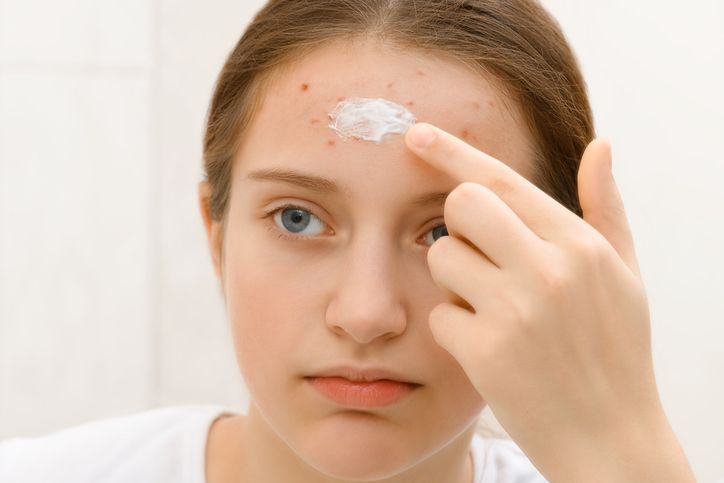
Combining Vitex with other acne treatments can provide enhanced results by addressing various factors that contribute to acne formation. Below are some effective ways to pair Vitex with other therapies to tackle acne and support clearer skin.
1. Vitex and DIM (Diindolylmethane)
Vitex and DIM (Diindolylmethane) can work synergistically to balance hormones and improve acne symptoms. DIM is a compound found in cruciferous vegetables, known for its ability to support estrogen metabolism and reduce estrogen dominance, which can lead to hormonal acne.
When combined with Vitex, which regulates hormones through the pituitary gland, DIM can further help target hormonal imbalances, particularly the excess estrogen or androgen levels that trigger acne. DIM also supports liver detoxification, helping to clear excess hormones that might contribute to acne flare-ups, especially around the chin and jawline.
Together, Vitex and DIM can help reduce acne caused by hormonal fluctuations, improving skin clarity over time. This combination is particularly beneficial for those who experience acne related to the menstrual cycle or PCOS.
2. Vitex and Topical Creams
For individuals with severe or cystic acne, combining Vitex with prescription topical creams can be highly effective. While Vitex works internally by balancing hormones and reducing inflammation, topical treatments directly address acne on the skin's surface.
Topical creams, like benzoyl peroxide or retinoids, are often prescribed to treat deep breakouts and acne cysts. When paired with Vitex, which targets the hormonal imbalance underlying acne, topical treatments can work more efficiently. Vitex’s anti-inflammatory properties can also complement these treatments by reducing redness, swelling, and irritation, leading to faster healing and clearer skin.
This combination can be especially useful for acne along the jawline and chin, which is often associated with hormonal imbalances. It is important to note that the use of both oral and topical treatments requires proper guidance from a healthcare provider to prevent over-drying or irritation.
3. Vitex and Antibiotics (Natural Alternative)
If you’ve been using antibiotics like doxycycline or tetracycline to manage acne, Vitex can offer a natural alternative to maintain the effects of your previous treatments. Antibiotics work by reducing bacterial growth on the skin, while Vitex targets hormonal imbalances that contribute to acne formation.
By switching to Vitex, which supports hormone regulation and reduces inflammation, you can avoid the long-term use of antibiotics. This approach can help manage acne without the potential side effects and long-term consequences of frequent antibiotic use, such as antibiotic resistance or gut imbalances.
Vitex's anti-inflammatory and hormone-regulating properties help keep acne at bay, making it an ideal choice for individuals looking for a more sustainable, natural treatment option for hormonal acne.
4. Vitex and Acne Light Therapy
Acne light therapy, also known as blue light therapy or red light therapy, is another effective treatment for acne, particularly cystic acne. When combined with Vitex, the anti-inflammatory and antioxidant properties of the herb can help enhance the healing process and reduce acne flare-ups.
Vitex targets the root cause of acne by regulating hormones, while light therapy helps kill acne-causing bacteria and reduce inflammation on the skin's surface. The combination of both treatments offers a holistic approach to acne management by addressing both internal and external factors. The light therapy can accelerate the healing of existing acne lesions, while Vitex works to prevent new breakouts by balancing hormones.
5. Diet and Hydration
A well-balanced, plant-based diet can significantly support the effects of Vitex in managing acne. Foods rich in vitamins, minerals, and antioxidants can help reduce inflammation, support hormone balance, and promote skin health. A diet high in fruits, vegetables, and whole grains provides essential nutrients like vitamins A, C, and E, which help protect the skin from oxidative stress and support collagen production.
Proper hydration is equally important when using Vitex for acne. Drinking enough water ensures that your skin stays hydrated, helps flush toxins from the body, and supports the detoxification process, which is essential for managing acne. Combining a healthy diet and adequate hydration with Vitex supplementation can maximize its benefits, leading to clearer and healthier skin.
Read More
Perfect Medical’s Acne Treatment: A Powerful Solution for Acne-Prone Skin

In the fight against acne, Vitex (Chaste Tree) has proven itself to be an effective natural treatment for balancing hormones and reducing breakouts. However, for those dealing with stubborn acne or looking for a more intensive solution, medical-grade treatments like Perfect Medical’s Acne Treatment can provide targeted results. Combining Vitex with advanced treatments can help address both hormonal and external factors contributing to acne. Here's everything you need to know about The Acne Treatment and how it works.
What is The Acne Treatment?
The Acne Treatment uses vacuum dermabrasion technology and medical-grade hydrating essence to treat acne and promote healthier, clearer skin. This non-invasive, pain-free treatment exfoliates the skin, clears blocked pores, and hydrates the skin, helping to reduce acne and improve overall skin texture.
How Does The Acne Treatment Work?
1. Vacuum Dermabrasion Technology: This technology gently exfoliates the skin by removing oil, dirt, and dead skin cells. It helps unclog pores, dissolve blackheads, and smoothen skin texture.
2. Hydrating Essence Infusion: During the treatment, a medical-grade hydrating essence is infused into the skin. This promotes collagen repair, stimulates tissue regeneration, and helps balance sebum production, leading to clearer, healthier skin.
3. Targeting Acne-Prone Skin: The combination of exfoliation and hydration addresses acne's root causes, including clogged pores, excess sebum, and inflammation.
Advantages of The Acne Treatment
The Acne Treatment offers several key benefits:
- Eliminates Stubborn Acne: By cleansing the skin deeply, this treatment helps reduce acne symptoms, including pimples, blackheads, and whiteheads. It also works to improve the appearance of acne scars and enlarged pores.
- Non-Invasive and Painless: Unlike some other acne treatments, The Acne Treatment is completely non-invasive and painless. There is no downtime or recovery period involved, making it safe and easy to incorporate into your skincare routine.
- Long-Lasting Results: Regular treatments help control inflammation, balance oil production, and prevent future breakouts. The results are long-lasting, especially when combined with a consistent skincare routine.
- Improves Skin Texture: By infusing medical-grade hydration and stimulating collagen production, The Acne Treatment helps smooth out rough, acne-prone skin, leaving it looking radiant, healthy, and smooth.
Who Should Use The Acne Treatment?
This treatment is suitable for all skin types, but it is especially effective for those dealing with acne. If you are struggling with:
- Pimples
- Acne Blemishes
- Blackheads and Whiteheads
- Enlarged Pores
- Dull, Dry Skin
If you're struggling with acne and looking for a solution that works, The Acne Treatment could be the answer. Combined with natural treatments like Vitex, which helps regulate hormones and reduce breakouts, this treatment addresses both internal and external factors that contribute to acne, providing you with clearer, healthier skin.
Ready for smooth, blemish-free skin? Give The Acne Treatment a try and enjoy long-lasting, visible results.
Book Now to Experience
Acne Treatment
1 Minute Self-Registration
Date should not be before minimal date
FAQ
Can I Derma Roll While Pregnant or Breastfeeding?
Yes, you can derma roll while pregnant or breastfeeding, but with specific precautions. During pregnancy, stick to dry needling without applying any topical products, as your skin's absorption rate increases. For breastfeeding mothers, dry needling remains safe, but continue avoiding active skincare products. Focus on treating stretch marks using larger needle sizes like 1.0mm, and always consult your healthcare provider before starting treatments, especially on sensitive areas.
How Long Does It Typically Take to See Results From Derma Rolling?
You'll notice initial improvements in skin texture and a temporary glow immediately after your first session, while improved hydration and minor fine line reduction may appear within weeks. More significant results, such as improvements in scarring and uneven skin tone, typically emerge around the 8-week mark. For deeper wrinkles or extensive scarring, you'll need to maintain consistent treatments for several months to a year.
Can Derma Rolling Help With Hair Growth on the Scalp?
Your scalp will be eternally grateful when you start derma rolling for hair growth. This method works by creating microscopic channels in your scalp, which stimulate blood flow and collagen production while enhancing the absorption of hair growth products. You'll typically want to use a 1.5mm needle size once or twice weekly, ensuring you've properly sterilized the roller and prepared your scalp beforehand.
Is It Normal for Skin to Peel Days After Derma Rolling?
Yes, it's normal for your skin to peel a few days after derma rolling, as this is part of your skin's natural healing and renewal process. The tiny punctures created by the derma roller trigger your skin's repair mechanism, leading to mild peeling similar to a sunburn. You can manage this peeling by keeping your skin well-hydrated with moisturizers, and the process typically resolves within 3-4 days.
Should I Avoid Retinol Products Completely When Using a Derma Roller?
Like a delicate dance between two powerful partners, retinol and derma rolling can work together when properly timed. You don't need to completely avoid retinol, but you should pause its use 48-72 hours before and after rolling sessions. Instead, focus on gentle, hydrating products during this window, and resume your retinol routine once your skin has fully recovered, typically 3-4 days post-rolling.
Recommended Articles
COPYRIGHT© NEW BEAUTY MANAGEMENT LIMITED 2025. ALL RIGHT RESERVED.



